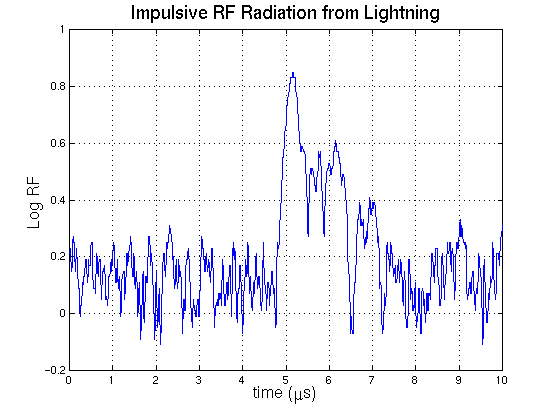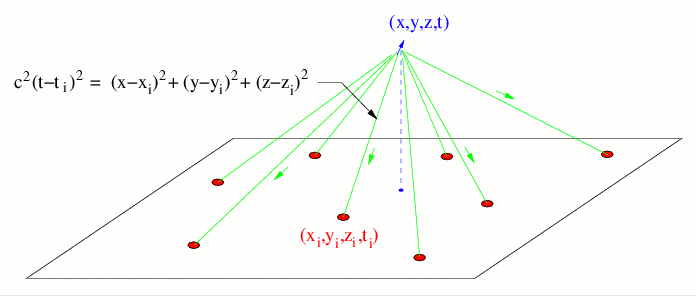
To determine the 3-dimensional structure and temporal development of a lightning discharge the system utilizes the basic technique employed by the LMA that has been developed and operated at Kennedy Space Center by Carl Lennon and Launa Maier. The LMA uses time of arrival measurements to locate impulsive VHF radiation events during a discharge. The following figure shows the VHF radiation for a portion of a typical lightning discharge. The sharp peaks in the Log RF plot are produced by impulsive electrical breakdown events in small source regions.

If the time of arrival of the radiation from such an event is measured at four locations, the 3-dimensional position of the source region can be determined. If impulsive radiation occurs at location (x,y,z) and at time t, the time it is received at station i is

where (xi,yi,zi) is the position of station i.

By measuring the time of arrival of the radiation at four stations the four unknowns (x,y,z,t) can be determined. To provide for redundancy in the data (so a noise spike at one of the stations is not misidentified as a source of lightning) the system uses ten receivers. The data from all ten stations is used to determine the location (and error in location) of the radiation source.
Timing is accomplished with the use of GPS receivers. Inexpensive GPS receivers provide a timing pulse once per second accurate to better than 50 ns. Each LMA station digitizes the RF signal and time tags the peaks with a time derived from the GPS timing signal. This time is stored at each individual station, and is brought to a central data processing site on tape for analysis. In the future we will transmit the data over wireless modems to a central site for real time analysis and display.